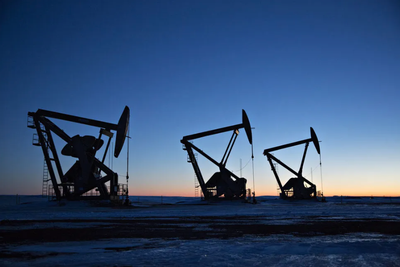guest column
Oil markets on edge: Geopolitics, supply risks, and what comes next
Oil prices are once again riding the waves of geopolitics. Uncertainty remains a key factor shaping global energy trends.
As of June 25, 2025, U.S. gas prices were averaging around $3.22 per gallon, well below last summer’s levels and certainly not near any recent high. Meanwhile, Brent crude is trading near $68 per barrel, though analysts warn that renewed escalation especially involving Iran and the Strait of Hormuz could push prices above $90 or even $100. Trump’s recent comments that China may continue purchasing Iranian oil add yet another layer of geopolitical complexity.
So how should we think about the state of the oil market and what lies ahead over the next year?
That question was explored on the latest episode of The Energy Forum with experts Skip York and Abhi Rajendran, who both bring deep experience in analyzing global oil dynamics.
“About 20% of the world’s oil and LNG flows through the Strait of Hormuz,” said Skip. “When conflict looms, even the perception of disruption can move the market $5 a barrel or more.”
This is exactly what we saw recently: a market reacting not just to actual supply and demand, but to perceived risk. And that risk is compounding existing challenges, where global demand remains steady, but supply has been slow to respond.
Abhi noted that U.S. shale production has been flat so far this year, and that given the market’s volatility, it’s becoming harder to stay short on oil. In his view, a higher price floor may be taking hold, with longer-lasting upward pressure likely if current dynamics continue.
Meanwhile, OPEC+ is signaling supply increases, but actual delivery has underwhelmed. Add in record-breaking summer heat in the Middle East, pulling up seasonal demand, and it’s easy to see why both experts foresee a return to the $70–$80 range, even without a major shock.
Longer-term, structural changes in China’s energy mix are starting to reshape demand patterns globally. Diesel and gasoline may have peaked, while petrochemical feedstock growth continues.
Skip noted that China has chosen to expand mobility through “electrons, not molecules,” a reference to electric vehicles over conventional fuels. He pointed out that EVs now account for over 50% of monthly vehicle sales, a signal of a longer-term shift in China’s energy demand.
But geopolitical context matters as much as market math. In his recent policy brief, Jim Krane points out that Trump’s potential return to a “maximum pressure” campaign on Iran is no longer guaranteed strong support from Gulf allies.
Jim points out that Saudi and Emirati leaders are taking a more cautious approach this time, worried that another clash with Iran could deter investors and disrupt progress on Vision 2030. Past attacks and regional instability continue to shape their more restrained approach.
And Iran, for its part, has evolved. The “dark fleet” of sanctions-evasion tankers has expanded, and exports are booming up to 2 million barrels per day, mostly to China. Disruption won’t be as simple as targeting a single export terminal anymore, with infrastructure like the Jask terminal outside the Strait of Hormuz.
Where do we go from here?
Skip suggests we may see prices drift upward through 2026 as OPEC+ runs out of spare capacity and U.S. shale declines. Abhi is even more bullish, seeing potential for a quicker climb if demand strengthens and supply falters.
We’re entering a phase where geopolitical missteps, whether in Tehran, Beijing, or Washington, can have outsized impacts. Market fundamentals matter, but political risk is the wildcard that could rewrite the price deck overnight.
As these dynamics continue to evolve, one thing is clear: energy policy, diplomacy, and investment strategy must be strategically coordinated to manage risk and maintain market stability. The stakes for global markets are simply too high for misalignment.
------------
Scott Nyquist is a senior advisor at McKinsey & Company and vice chairman, Houston Energy Transition Initiative of the Greater Houston Partnership. The views expressed herein are Nyquist's own and not those of McKinsey & Company or of the Greater Houston Partnership. This article originally appeared on LinkedIn.
